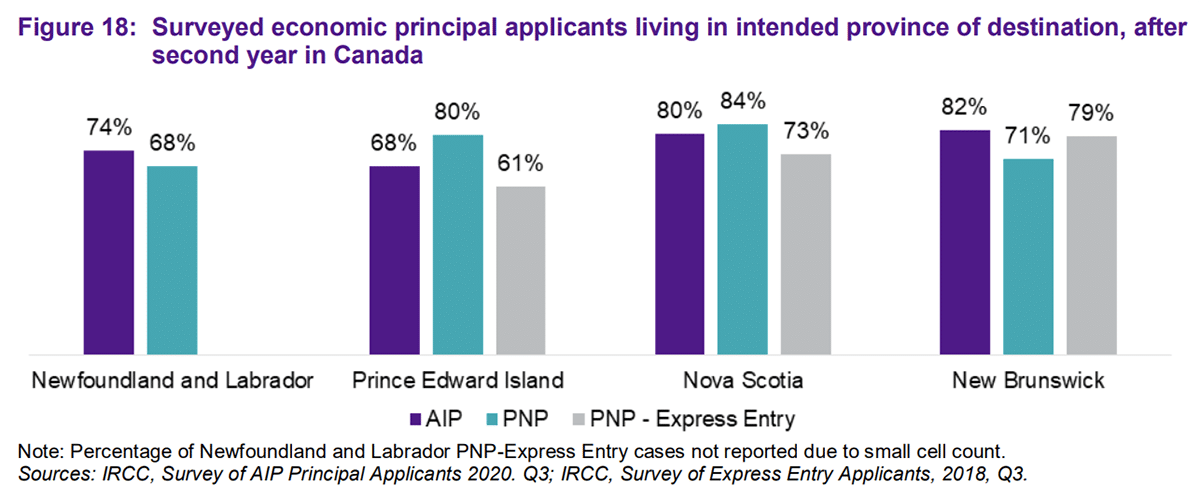Atlantic Immigration Pilot improving immigrant retention rates in the region
The Atlantic Immigration Pilot (AIP) appears to be on the right track to help east coast provinces retain immigrants.
Immigration, Refugees and Citizenship Canada (IRCC) reviewed the AIP in the period starting from when it was launched in March, 2017 to the end of the 2019-2020 fiscal year. They wanted to see if the pilot was working as it was intended, to help grow the population and meet labour market demands.
The AIP is an employer-driven program. It allows employers in the four Atlantic provinces to hire foreign talent without having to get a Labour Market Impact Assessment, which has been described as an expensive and lengthy process. Through this program, immigrants come to Canada with a job and a settlement plan from a designated service provider.
Atlantic Canada has historically struggled to keep immigrants in the region, so retention is the cornerstone of the pilot. IRCC found that of the 5,590 respondents, who had immigrated to Atlantic Canada through the AIP, most were still in their province of landing two years later.
Find out if you’re eligible for Canadian immigration
A large proportion of AIP immigrants reported working for their original Canadian employer at the time of the survey, and some of those who changed employers were still working in the same province. Most AIP newcomers were still living in Atlantic Canada after their first year. These early finding seem to indicate that AIP has a higher retention rate than other economic programs in Atlantic Canada.
Almost half of respondents, 45 per cent, were in New Brunswick and 34 per cent were in Nova Scotia. PEI and Newfoundland and Labrador were each host to 10 per cent of respondents.
AIP retention rates after two years were higher for immigrants in New Brunswick and Newfoundland and Labrador in comparison to other immigration pathways. Most of those who were in Canada at the time of the survey said they planned on staying in their province of residence, while less than a fifth said they did not know, and 3 per cent reported that they do not plan to stay.

The main reasons why respondents wanted to stay in the province was because they liked their community, the cost of living was affordable, and they liked their job. About one third also said that they had family or friends in the province.
Those who wanted to leave mostly said it was to make more money in another province, and about 40 per cent of these respondents said they had not been able to find other job opportunities in their province of landing.
The evaluation found that the settlement plans were helpful when they were used. Most AIP principal applicants did not know they could access these services for free even though most employers said their organization provided settlement supports. Among other recommendations on how to improve the program, IRCC agreed to develop a strategy to increase awareness of settlement services for AIP principal applicants, as well as their spouses and children.
The AIP is on track to become a permanent immigration program. The pilot was extended until December 2021 to allow for more time for IRCC to study the mid and long-term impact of the program on the region.
Find out if you’re eligible for Canadian immigration
© CIC News All Rights Reserved. Visit CanadaVisa.com to discover your Canadian immigration options.
- Do you need Canadian immigration assistance? Contact the Contact Cohen Immigration Law firm by completing our form
- Send us your feedback or your non-legal assistance questions by emailing us at media@canadavisa.com







